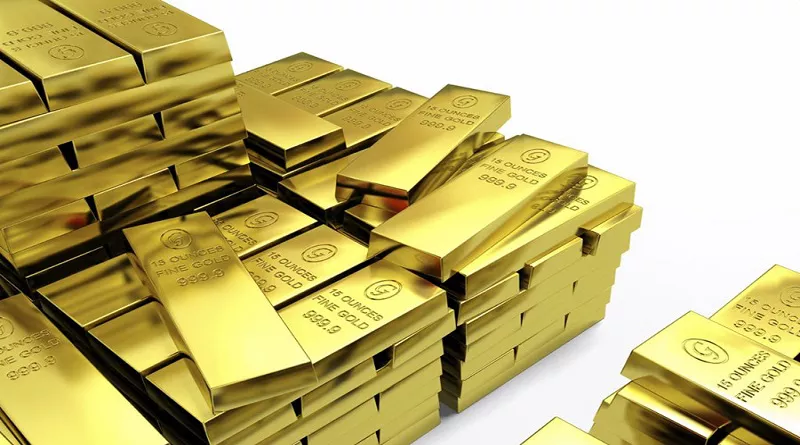Gold has long been considered a valuable asset, often viewed as a safe haven during economic uncertainty. Understanding the historical price of gold provides valuable insights into its value over time and its role in the global economy. This article will focus on the price of gold in 1983, exploring the factors that influenced its market value, the economic context of the time, and its implications for investors and collectors.
The Economic Landscape of 1983
1. Global Economic Overview
In 1983, the global economy was recovering from the stagflation of the late 1970s and early 1980s. Stagflation, characterized by stagnant economic growth, high unemployment, and rising inflation, had created a challenging environment. Key events shaping the economic landscape included:
Recession: The early 1980s experienced a significant recession in the United States, driven by high interest rates aimed at controlling inflation. The Federal Reserve, under Chairman Paul Volcker, implemented policies that resulted in double-digit interest rates.
Inflation: Inflation rates were still a concern, although they began to decline in 1983. The Consumer Price Index (CPI) showed signs of stabilization, with inflation hovering around 3.2% by the end of the year.
2. Gold’s Historical Context
Gold prices had experienced considerable volatility leading up to 1983. The metal had peaked in value in the late 1970s, largely driven by geopolitical tensions and economic instability. In 1980, gold prices reached an all-time high of approximately $850 per ounce, largely due to the Iranian Revolution and the Soviet invasion of Afghanistan.
Gold Prices in 1983
1. Price Fluctuations Throughout the Year
In 1983, the price of gold fluctuated significantly. Here’s a monthly breakdown of the average gold prices for that year:
January: $425.00
February: $425.50
March: $425.25
April: $429.75
May: $419.00
June: $401.50
July: $395.00
August: $397.75
September: $408.50
October: $400.00
November: $396.00
December: $400.50
The average gold price for 1983 was approximately $410.75 per ounce. These fluctuations were influenced by various economic and geopolitical factors.
2. Comparison to Previous Years
The average gold price in 1982 was about $450.00 per ounce, showing a notable decline in 1983. This drop reflected a general stabilization in the economy and a decrease in inflationary pressures. Compared to the peaks of 1980, gold was significantly less valuable, indicating a market correction after the highs driven by crisis conditions.
Factors Influencing Gold Prices in 1983
1. Economic Policies
The Federal Reserve’s monetary policies played a significant role in shaping gold prices during this period. As the Fed increased interest rates to combat inflation, the opportunity cost of holding non-interest-bearing assets like gold increased. This shift led to decreased demand for gold as an investment.
2. Geopolitical Events
Geopolitical factors also influenced gold prices. While tensions remained in various parts of the world, including Central America and the Middle East, the relative calm compared to the late 1970s led to a stabilization in gold prices. Investors were less inclined to view gold as a necessary hedge against uncertainty.
3. Currency Strength
The strength of the U.S. dollar is closely tied to gold prices. In 1983, the dollar began to strengthen, particularly against major currencies like the Japanese yen and the German mark. A stronger dollar generally leads to lower gold prices, as gold becomes more expensive for foreign investors.
4. Changes in Demand
Demand for gold in 1983 was affected by various factors, including:
Jewelry and Industrial Demand: Gold’s use in jewelry and industrial applications remained strong, contributing to its baseline demand.
Investment Demand: The decline in gold prices led some investors to sell off holdings, contributing to further downward pressure.
The Role of Gold in Investment Portfolios
1. Gold as a Hedge
During uncertain economic times, gold has historically been viewed as a hedge against inflation and currency devaluation. In 1983, while inflation was declining, the memory of the recent high inflationary period still lingered, keeping gold relevant as a potential safe investment.
2. Portfolio Diversification
Investors often include gold in their portfolios to diversify risk. Despite the declining prices in 1983, many still considered gold a valuable asset for risk management.
Collecting Gold Coins and Bullion in 1983
1. Popular Gold Coins
In 1983, various gold coins were popular among collectors and investors, including:
American Gold Eagle: Introduced in 1986, this coin quickly gained popularity for its purity and government backing.
Krugerrand: The South African Krugerrand was widely recognized and favored for its investment potential.
Canadian Maple Leaf: Known for its high purity, this coin was becoming increasingly popular among investors.
2. Gold Bullion Bars
Investors also turned to gold bullion bars as a means of investment. The ease of trading and storing these bars made them attractive options for those looking to invest large sums in gold.
Long-Term Trends and Implications
1. The Future of Gold Prices
The price of gold in 1983 can be viewed as part of a larger historical trend. Following the decline in prices during the mid-1980s, gold experienced another surge in the 2000s, reaching new heights as economic uncertainty returned.
2. Lessons for Investors
Understanding the price dynamics of gold in 1983 offers valuable lessons for modern investors:
Market Volatility: Gold prices can be influenced by a wide range of factors, including economic policies, geopolitical events, and currency fluctuations.
Long-Term Perspective: Investing in gold should be approached with a long-term perspective, considering its role in a diversified portfolio rather than short-term price movements.
Conclusion
The price of gold in 1983 reflects a period of recovery and stabilization following a tumultuous economic landscape. With an average price of approximately $410.75 per ounce, gold demonstrated significant fluctuations influenced by various economic and geopolitical factors. Understanding these dynamics is crucial for investors and collectors looking to navigate the complexities of the gold market. As history has shown, gold remains a valuable asset, and lessons from the past can inform future investment strategies.
Related topics:
- The Price of Gold in 1982: A Historical Perspective
- The Price of Gold in 1981: A Historical Perspective
- The Price of Gold in 1978: A Historical Perspective


